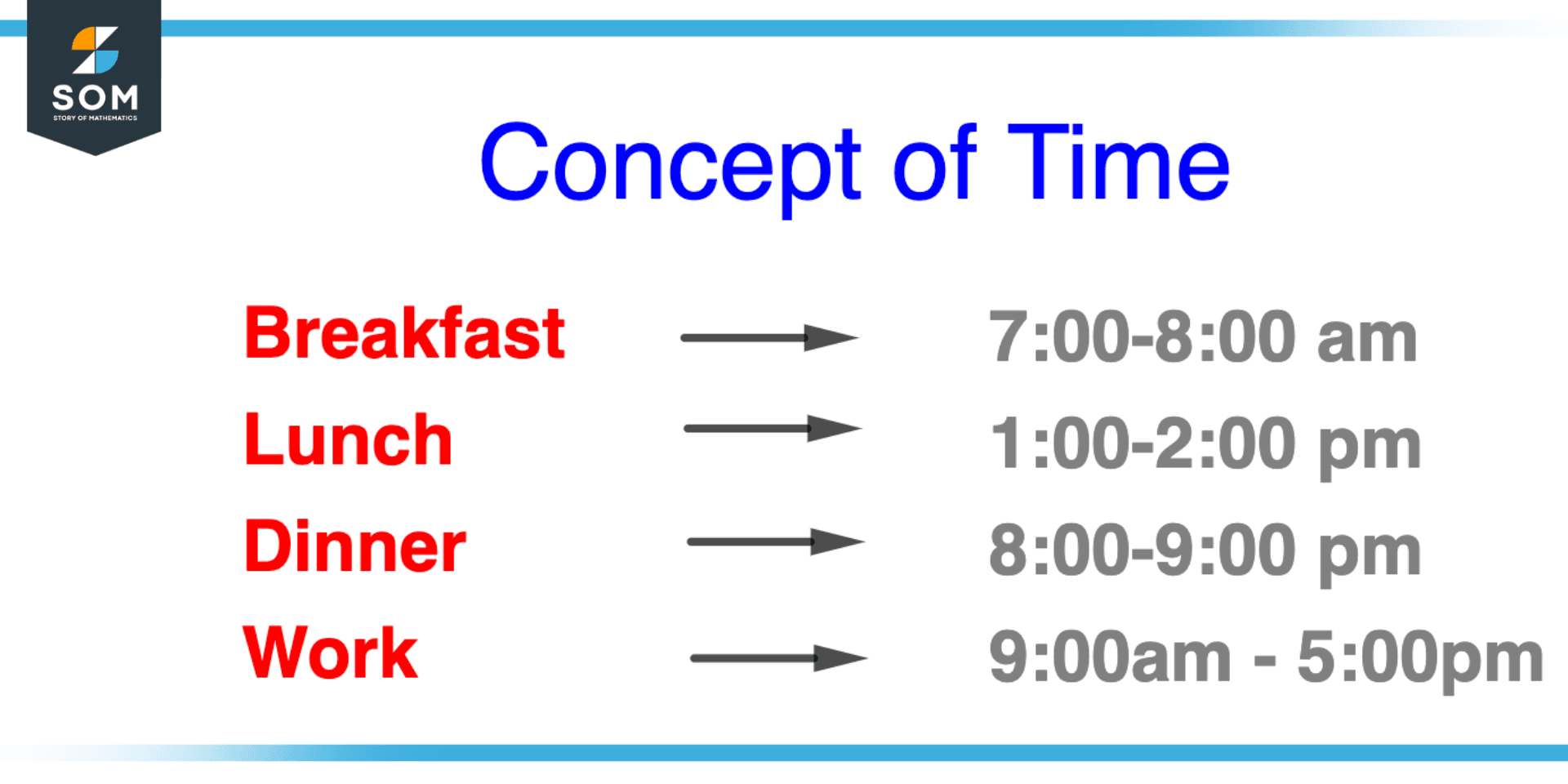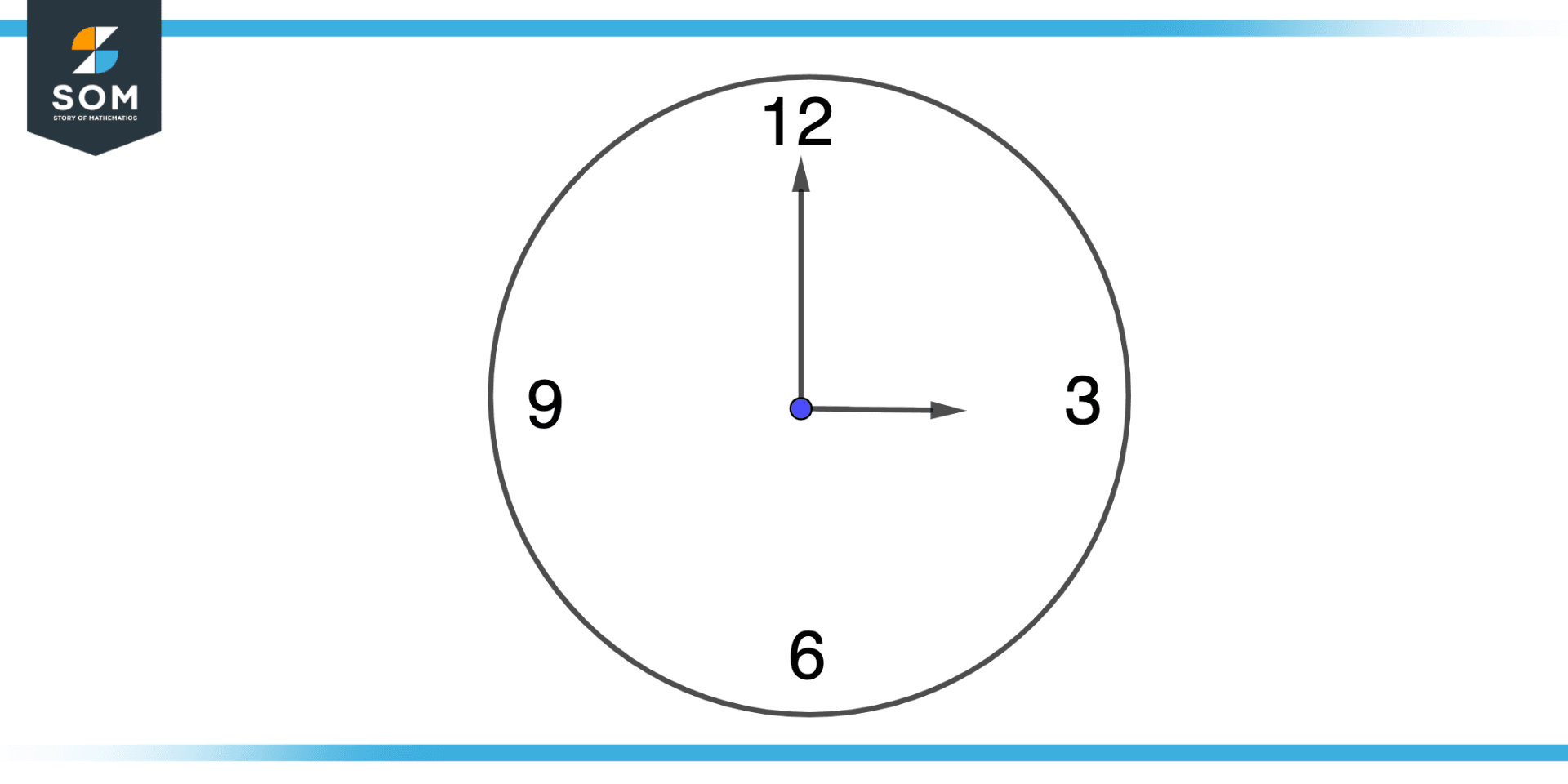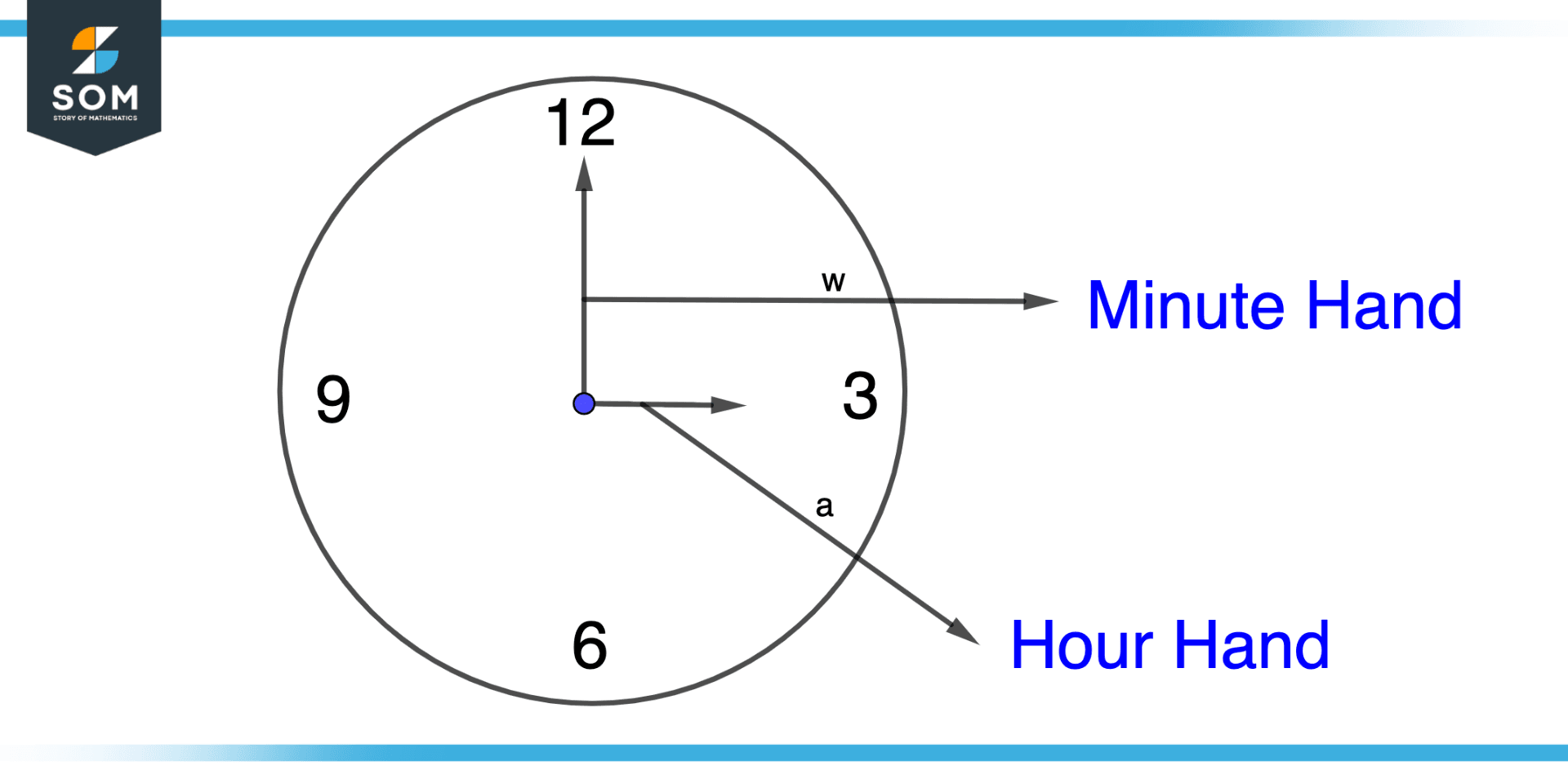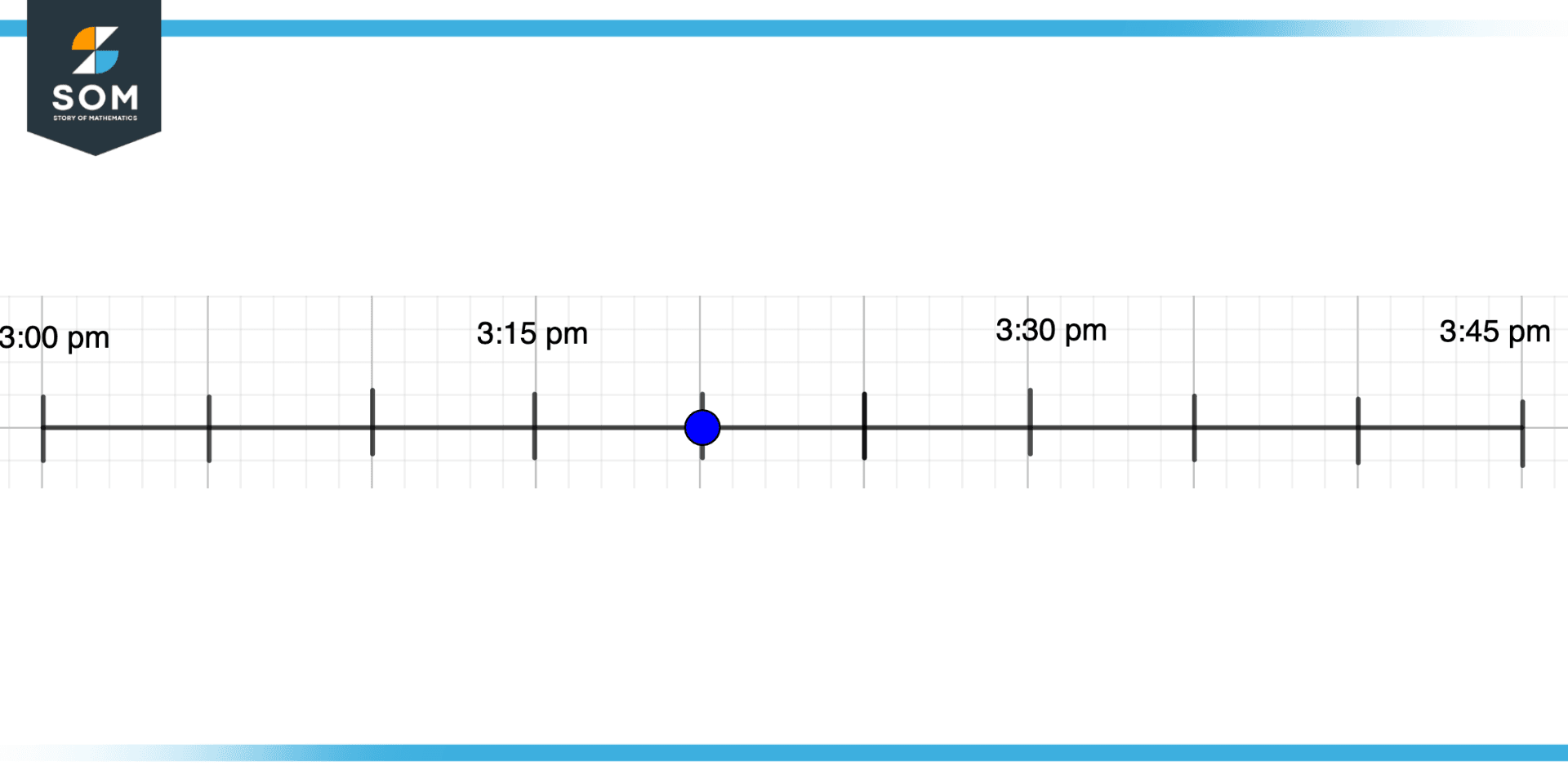JUMP TO TOPIC
Time|Definition & Meaning
Definition
Time represents the ordered flow of events in the universe. It represents past events that have occurred, e.g., the writing of this article, present events occurring right now, e.g., you are reading this article, and future events that will occur, e.g., you continue reading this article. The standard unit of time is seconds, and we measure it with devices called clocks.
Concept of Time

Figure 1 – Time as a metric for doing certain events in our daily life (a timetable or schedule).
The concept of time flowing in a single direction, from the past to the present and into the future, is frequently expressed mathematically as a continuous real number. This understanding of time is predicated on the notion that the universe is deterministic and that time behaves according to natural laws.
There are many tasks in daily life that are streamlined with time, like there is a specific time to do breakfast, lunch, dinner, work and sleep. These tasks are illustrated in the figure above.
Methods to Measure Time

Figure 2 – Visualizing a clock for realizing time
Mechanical Clocks
These keep time by using a physical mechanism, like a pendulum or a spring.
Quartz Clocks
These use an oscillator to keep time, and a quartz crystal’s vibrations determine the frequency of the oscillations.
Atomic Clocks
These offer highly accurate and reliable time measurements by using the vibrations of atoms.
Sundials
These tell the time by utilizing the position of the sun.
Hourglasses
Sand moves from one chamber to another in hourglasses, which use this method to measure time.
Water Clocks
These clocks use the movement of water from one chamber to another to measure time.
Digital Clocks
These are common in modern times and use electronics to display the time.
Telling Time Using Clocks

Figure 3 – Visualizing an analog or mechanical clock to tell time (3:00 am/pm).
A clock is a tool for telling the time by keeping track of the passage of time. There are two main categories of clocks: analog clocks, which use hands that revolve around a dial to show the time, and digital clocks, which use numbers.
Analog Clock
Hour-and-minute hands-on analog clocks revolve around a dial. The minute hand shows the minutes, while the hour hand shows the hours. With an analog clock, all you have to do to tell the time is look at where the hour and minute hands are in relation to the numbers on the dial.
Digital Clock
In digital clocks, the hour, minute, and second are displayed on a screen along with the time in numerical form. You only need to read the numbers on the screen of a digital clock to determine the time.
Representation of Time in Mathematics
In Calculus
Time is frequently used in calculus to describe a variable’s rate of change.
For instance, in kinematics, the derivative of an object’s position with respect to time can be used to describe an object’s velocity. This enables us to comprehend how things move and evolve over time. The rate at which temperature changes in relation to time can also be used to describe heat transfer in thermodynamics.
As a Series of Discrete Events
As a series of discrete events, time can also be represented in mathematics. Time is divided into a series of instants in this illustration, each of which represents a single moment in time. Discrete mathematics is built on this foundation, with an emphasis on the connections between these events and the laws governing their behavior.
Physics
Time is frequently thought of as a dimension in physics, similar to the three dimensions of space. This concept is fundamental to the theories of special and general relativity, which combine time and space into a single spacetime object with four dimensions. According to these theories, time and space have a connection and influence one another.
For instance, time may appear to slow down in the vicinity of a large object due to the curvature of spacetime.
Geometry
Time is a factor in the study of motion and change in geometry. A curve in spacetime, which represents the path of an object as it moves through space and time, is an illustration of how the idea of a curve in space can be expanded.
Engineering, Finance, and Computer Science
Time has useful applications in a wide range of disciplines, including engineering, finance, and computer science, in addition to mathematics. For instance, time is used in engineering to simulate how a system will behave over time, enabling engineers to create systems that are more effective and efficient.
Time is an important consideration in finance when determining interest rates and the cost of financial instruments. Time is used in computer science to schedule, coordinate, and synchronize processes that are running on various computers.
Time on Number Line
On a number line, time is frequently shown as a continuous progression of values that represent the passing of time. To show how much time has passed, a number line that starts at zero and grows over time is typically used.
For instance, using a 24-hour format, where 0 represents midnight, 12 represents noon, and 24 represents midnight once more, is a typical way to represent time on a number line. The progression of values on the number line in this format corresponds to the progression of hours, with each hour being represented by a single value.
The number line can also show minutes and seconds by breaking down each hour into smaller chunks. One minute can be represented by 60 equal parts, each part representing one minute, for instance. In this way, the number line can show a specific time, like 2:15 PM, as a single value that represents the number of minutes since midnight.
Telling Time From an Analog Clock
An analog clock’s hour and minute hands must be placed in relation to the numbers on the dial in order to be read. The steps to reading the time on an analog clock are as follows:
The hour hand is typically the shorter of the two hands on the clock and points in the direction of the hour marks on the dial.
Step 1
Find the hour: To find the hour, check where the hour hand is in relation to the hour markers on the dial. The hour hand points to the hour mark, which denotes the current hour.
The minute hand is typically the longer one of the two hands on the clock and points in the direction of the minute marks on the dial.
Step 2
Check the minute hand’s position in relation to the minute marks on the dial to ascertain the time in minutes. The minute hand is pointing to the minute mark, which denotes the current minute.
Step 3
Observe the time: By adding the hour and minute information, the time can be determined. The time is 3:15, for instance, if the minute hand is pointing toward the 15-minute mark and the hour hand is pointing toward the 3 o’clock position.
An Example of Time on a Number Line
Observe the number line and tell the time instance marked on it. What’s the total time spanned by this number line ?
Figure 4 – Example of Time
Solution
We can see from the number line the current time is 3:20 pm.
Since the extreme left of the number line shows 3:00 pm, and the extreme right shows 3:45 pm, the total time spanned by this number line is 45 minutes.
All mathematical drawings and images were created with GeoGebra.
